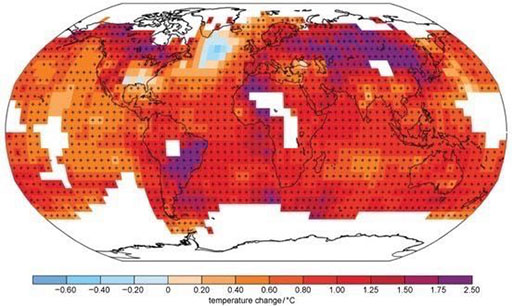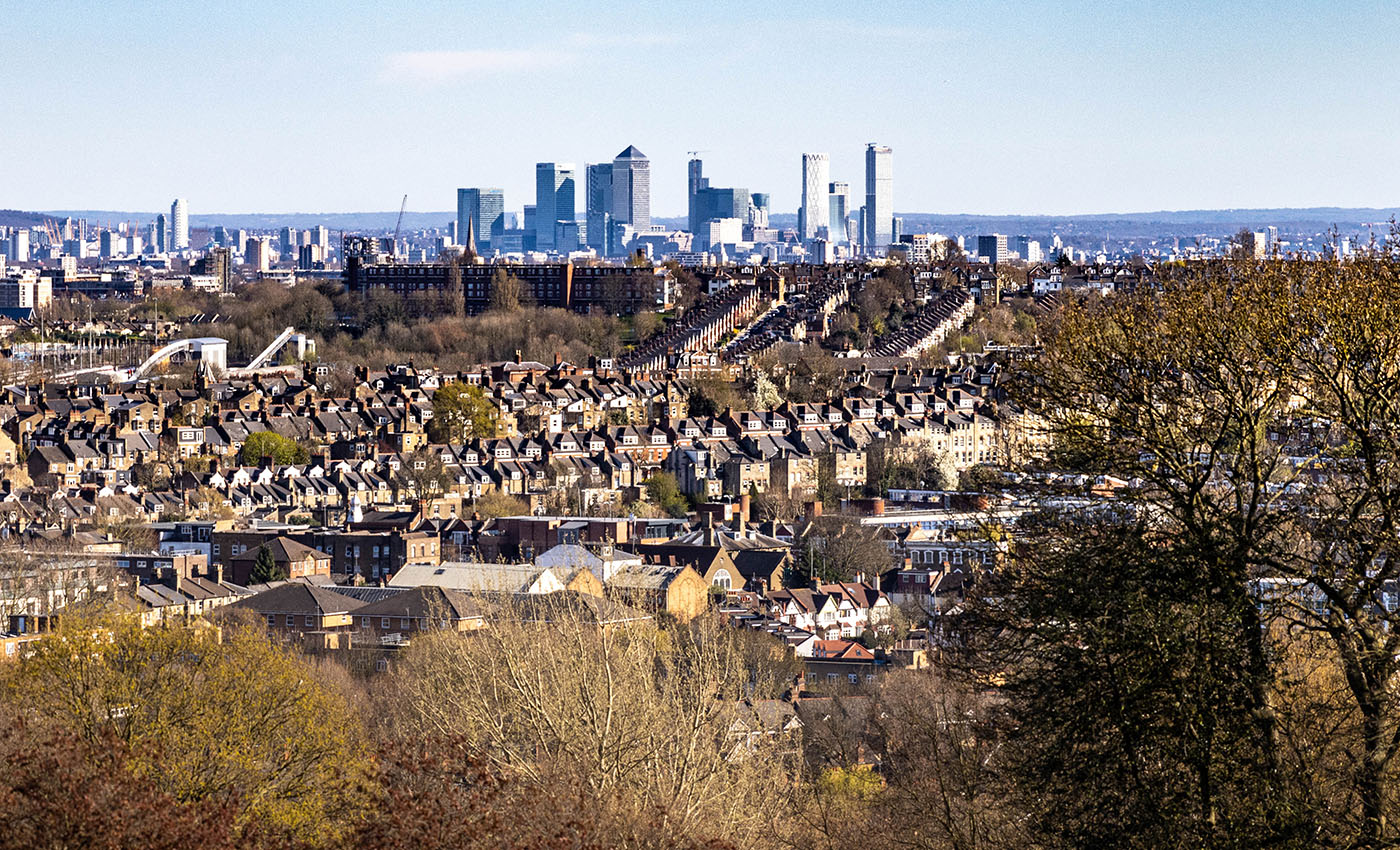2.2 Changes in local and extreme temperatures
Small shifts in average temperatures can mean the local extreme high temperatures become unbearable for humans and other species living in areas with climates that are already challenging
Figure 5 shows a map of the observed surface temperature changes from 1901 to 2012 (IPCC, 2013).

Many regional changes have been more than double the global average. Figure 5 shows that changes in large regions of South America and Eurasia have been around 2°C since 1900. This is still not the complete picture: in white regions, there are not enough data to reliably calculate the long-term trend since 1901. This includes most of the northern Arctic regions, where the available measurements show that warming has been greatest.
Global warming shifts the distribution of temperatures. Since 1950, hot days and nights have generally become warmer and more frequent, while cold days and nights have become warmer and less frequent (IPCC, 2013).
